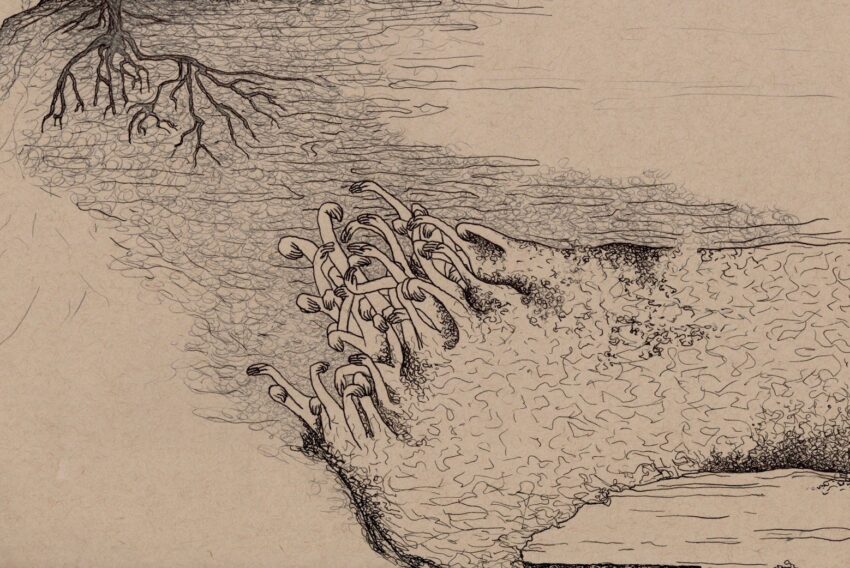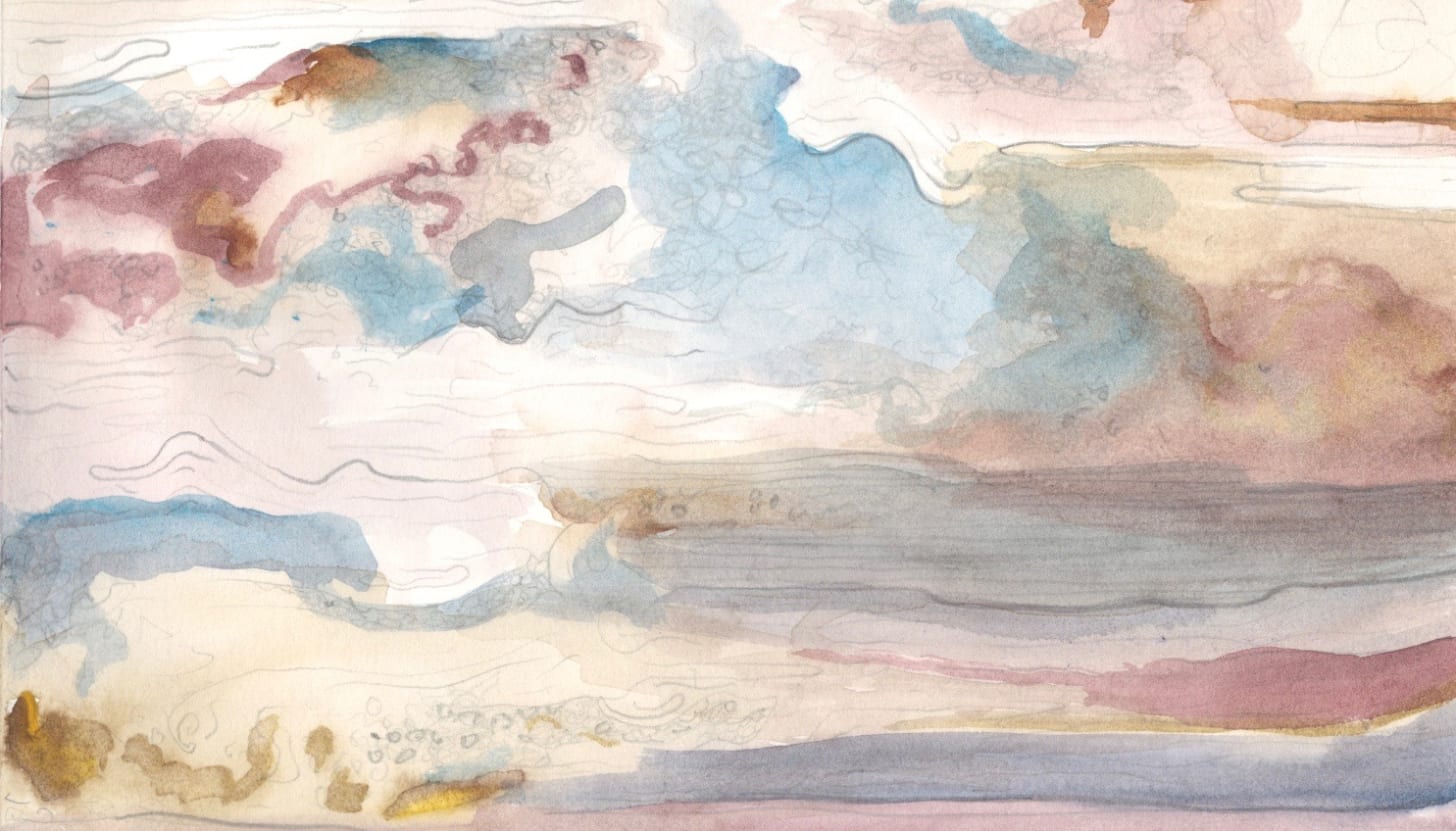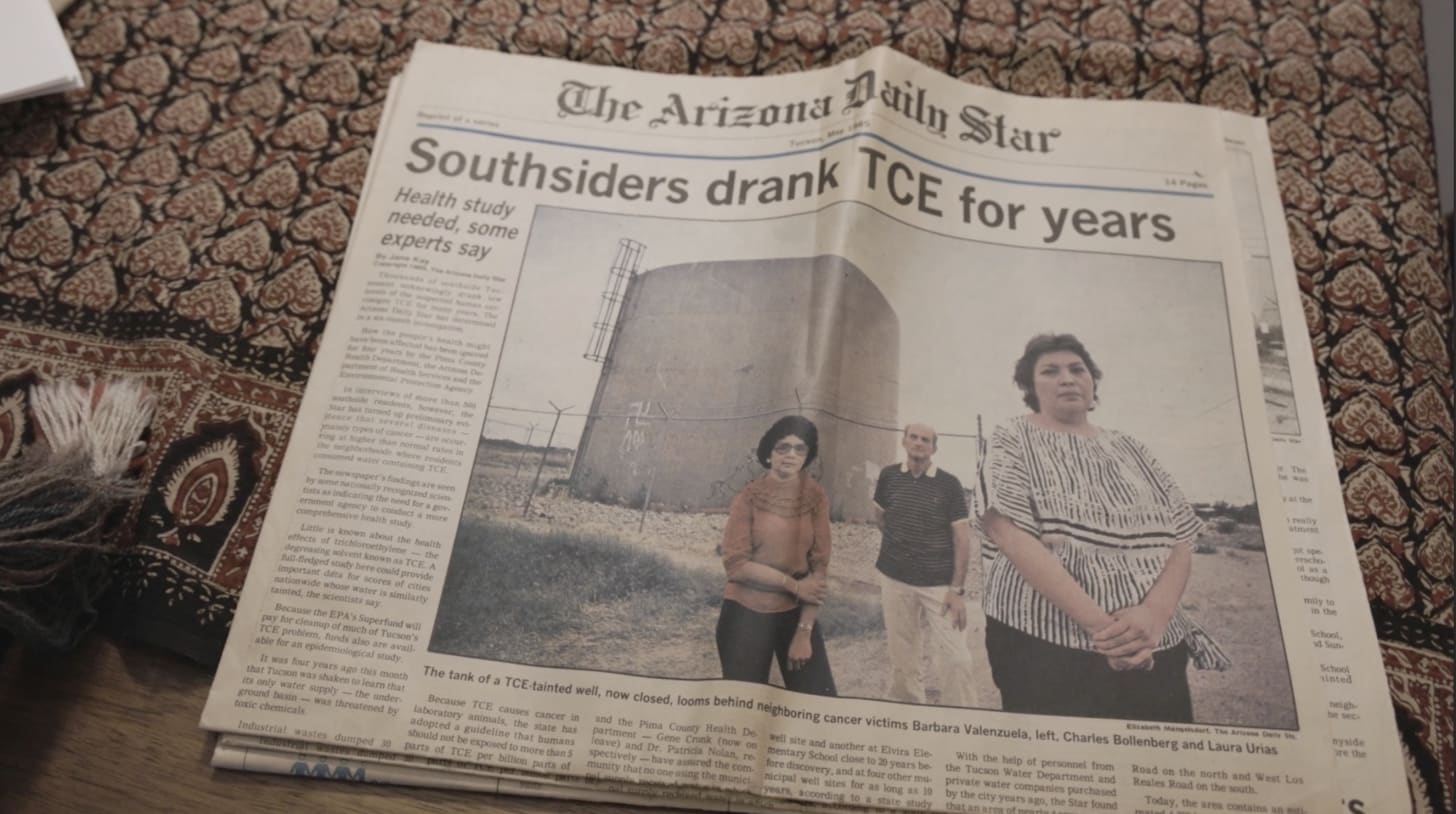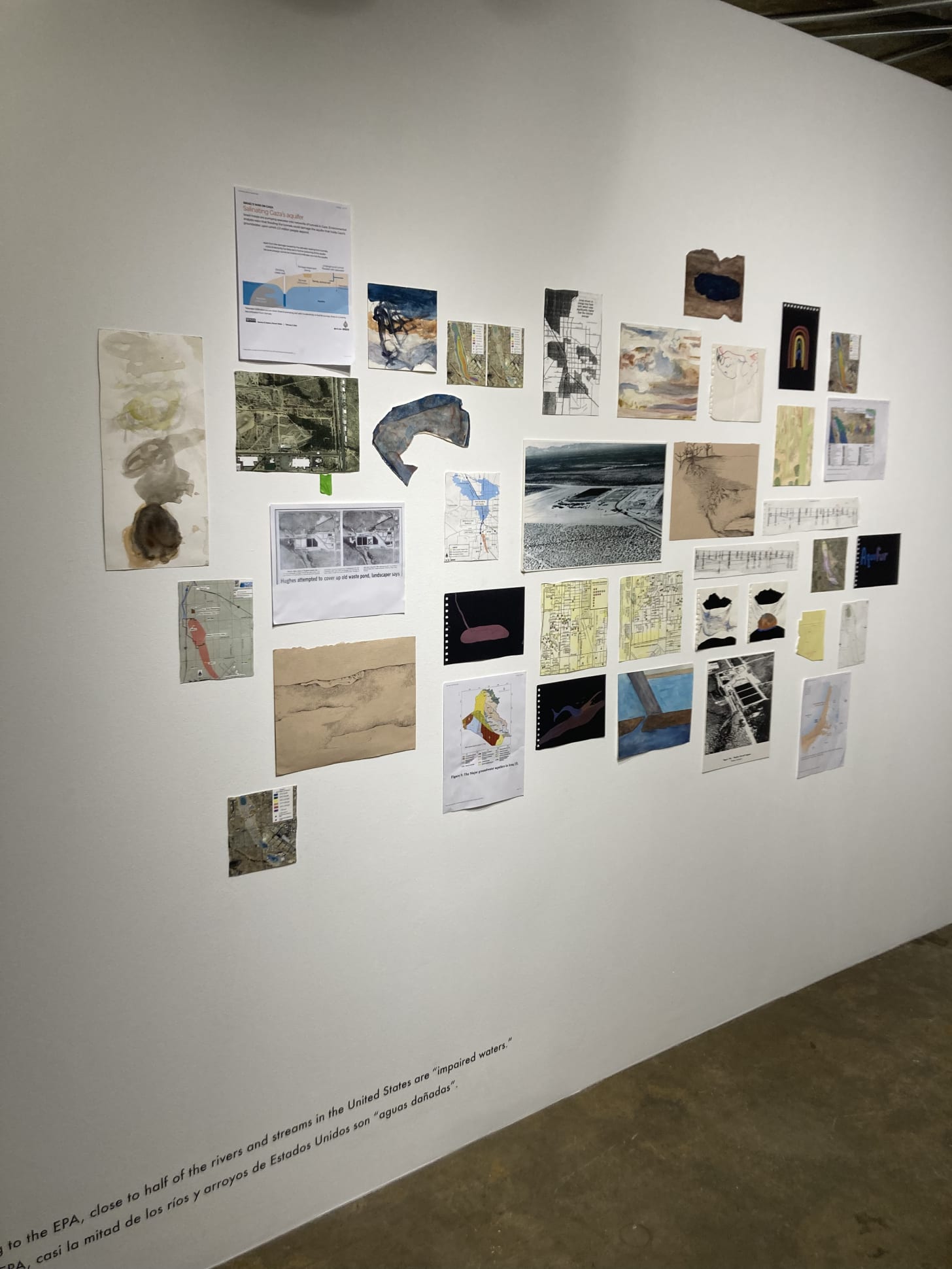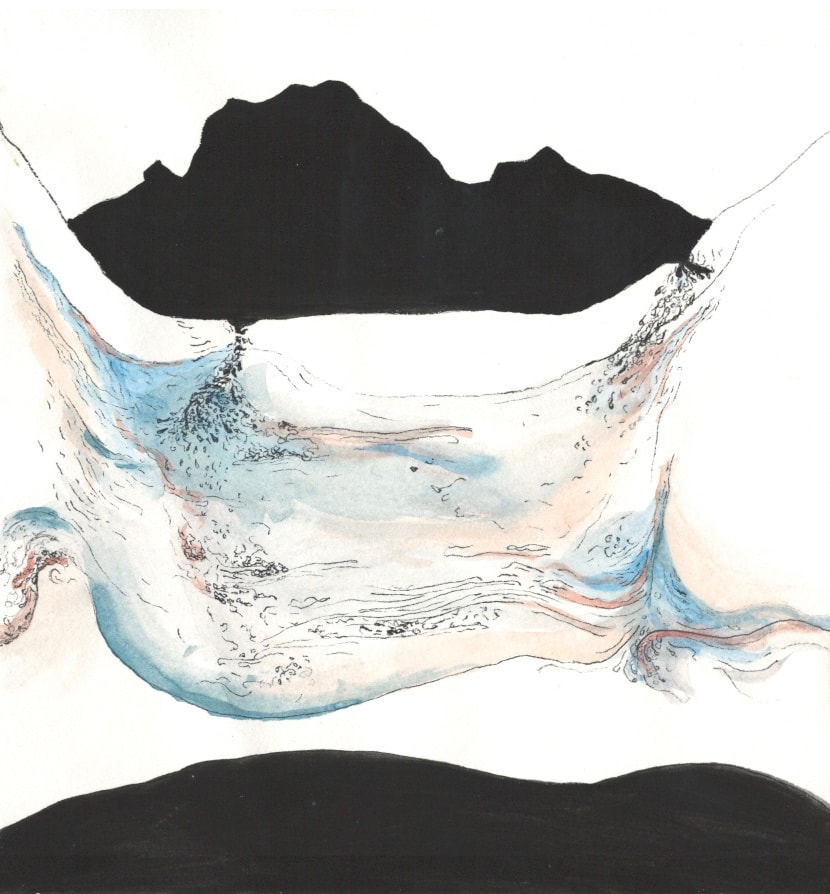For the next seven months, a living room will occupy the northeast corner of the Tucson Museum of Contemporary Art. There, visitors will find a couch draped with a crocheted blanket, a television set playing an episode of Frontline from 1988, and a basket stacked with photocopied forms featuring simple graphics and faded gray ink. Visitors are invited to enter the room, sit down, and fill out the forms with their health information. As they do, they exist simultaneously in 1988 and 2025, resonating with the similarities and discontinuities between the two eras.
The exhibition Living with Injury isn’t an ordinary contemporary art show; it’s also a decades-long community environmental justice effort and public health study that has come to life. In addition to the exhibit’s living room, the exhibition features paintings and sound art, oral histories, video installations, and archival artifacts. It blurs temporal and disciplinary boundaries—perhaps the only way to convey a story as complex as the one it tells.
One place to begin the story is May 16, 1940, when President Franklin D. Roosevelt gave his message to Congress on appropriations for national defense. He called for the U.S. to increase its production capacity of airplanes from 12,000 a year to at least 50,000. “Facilities for production must be ready to turn out munitions and equipment at top speed,” he said.
Arizona businessmen saw an opportunity. They began traveling to Washington to lobby for air bases and other defense installations to be located in the state. They promised cheap land, proximity to the Pacific coast, and hundreds of clear days each year, perfect for flight tests and pilot training. Operations at the Davis-Monthan Landing Field were scaled up, and the Marana and Ryan Army Air Fields were created.
The federal investment in the region also attracted private companies that profited from defense contracts. Income from manufacturing increased from $17 million in 1940 to $85 million in 1945.
One of these companies was the Hughes Aircraft Company, a Los Angeles firm that became one of the government’s main suppliers during World War II. In 1951 the company held secret meetings with local government and Chamber of Commerce representatives—at night, in hangars south of the city. Afterward, Hughes opened a missile plant in Tucson. (In 1997, Hughes was purchased by Raytheon, and the Tucson plant became the headquarters of its missile division.)
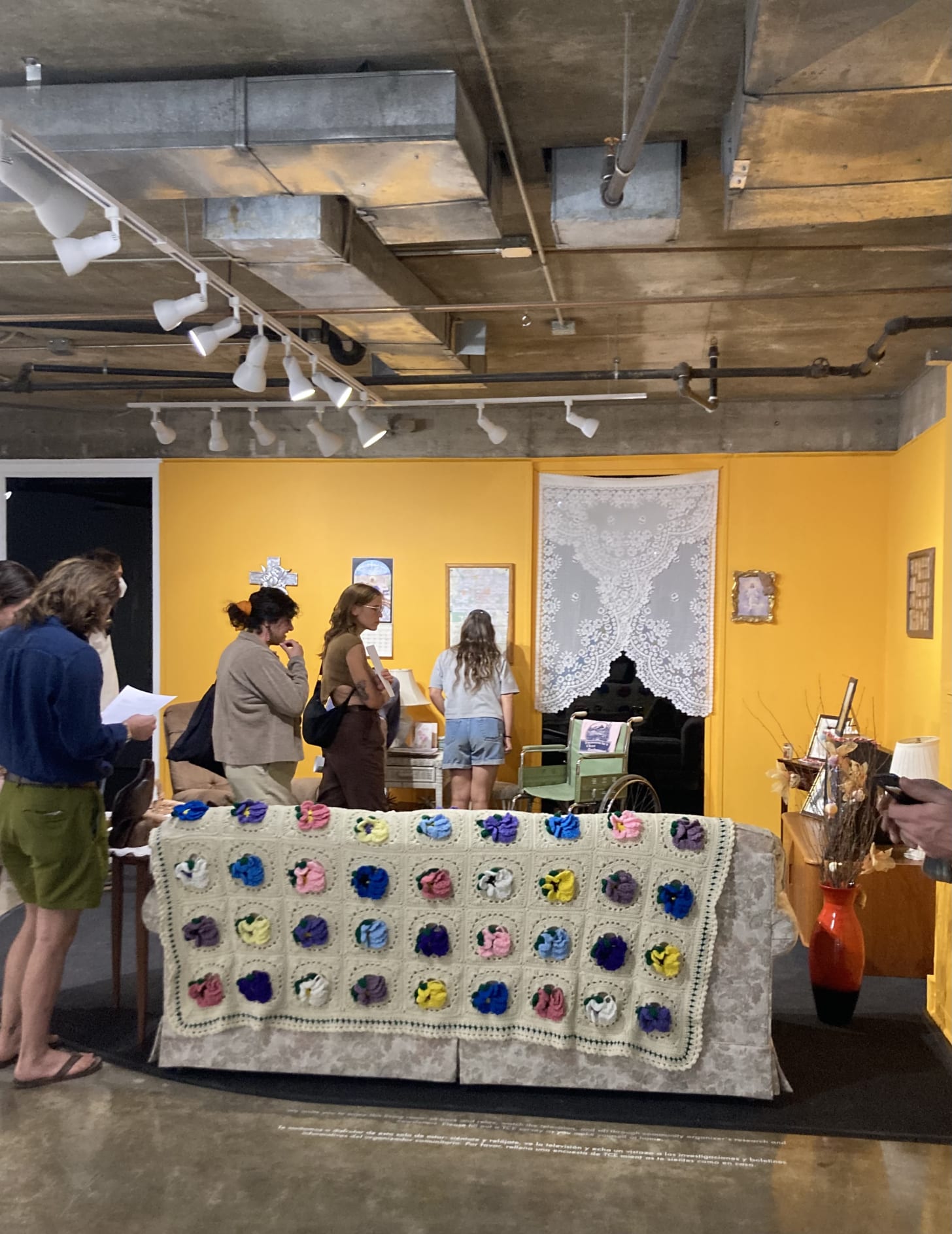
Throughout this time, a chemical called trichloroethylene, or TCE, was used to clean the aircrafts being developed, tested, and used in Tucson. The liquid TCE was pressurized into a vapor that could degrease metal components, ensuring that they wouldn’t explode due to leftover oils.
Yet TCE was also making Tucsonenses very sick. In May 1985, journalist Jane Kay published 30 investigative articles over an eight-day span in the Arizona Daily Star detailing the connection between the Hughes company’s TCE disposal and clusters of cancer and other diseases on Tucson’s south side. Hughes was dumping its spent TCE into the same aquifer that residents drew their drinking water from. Kay calculated that about 20,000 people had been drinking contaminated water for 20 years.
At the time, “there was no law against [Hughes] dumping all of their incredibly toxic chemicals into the washes and into their holding ponds,” explained Kay in a panel at the November 14 opening of Living with Injury. The Environmental Protection Agency had been founded only in 1970. “When you think about it,” continued Kay, “that is so recent.”
In response, a group of residents formed the organization Tucsonans for a Clean Environment—appropriating trichloroethylene’s acronym. They started “holding feet to the fire,” recalled Kay. After lawsuits, community hearings, settlements, and remediation plans—not to mention preventable illnesses and deaths—the EPA finally declared TCE a carcinogen in 2014. In December 2024, the EPA ruled that the use of TCE should be banned, though in 2025 the Trump administration postponed the ban from going into full effect.
On the gallery wall behind Alisha Vásquez, Benjamin Bartu, and Adam Gilliand’s Living Room, Tucson 1988 is Sunaura Taylor’s Speculative Aquifers, 2017–2020. Assembled on the wall are historical photographs, maps, and diagrams, as well as watercolor paintings made by Taylor that illustrate her varied understandings of aquifers—which are notoriously difficult to visualize, even for scientists. One, Aquifer Infrastructure, shows two layers of water connected by a gap; another, Aquifer Sponge, shows runoff from landforms collecting underground.
In May 2024, Taylor, an artist and scholar, published Disabled Ecologies, which examines the history of Tucson’s TCE contamination from the perspectives of disability studies and environmental justice. Taylor refers to the site as a “disabled ecology” to describe the way that humans, aquifers, and other elements of the environment share the experience of impairment by TCE contamination and also work together to form networks of resistance.
The wall resembles the lithographs that artist Dennis Oppenheim made as studies for works of land art. Like Taylor, Oppenheim’s collages combine maps, technical diagrams, and photography. Yet they were also preparations for large-scale works of land art. Instead of seeking to make its mark on seemingly empty land—an act perhaps not dissimilar to those of the borderlands’ aerospace industries—Speculative Aquifers instead provides the legend for how the gallery space renders a vast, invisible disabled ecosystem present and tangible.
Living with Injury opens at a moment when organizing around water has once again become a focal point for Tucson residents. This year, the nationwide data center boom touched down in southern Arizona, and residents coalesced in fierce opposition. At the same time, the Supreme Court’s 2023 Sackett v. EPA ruling determined that the Clean Water Act did not apply to ephemeral waterways—what are colloquially known as “washes” or “arroyos.” It may once again be the case, as Kay said of the postwar period, that defense firms will be allowed to dump toxic waste into those often-dry but nevertheless critical channels. There is no better moment for borderlands residents to understand their place in the region’s disabled ecology.
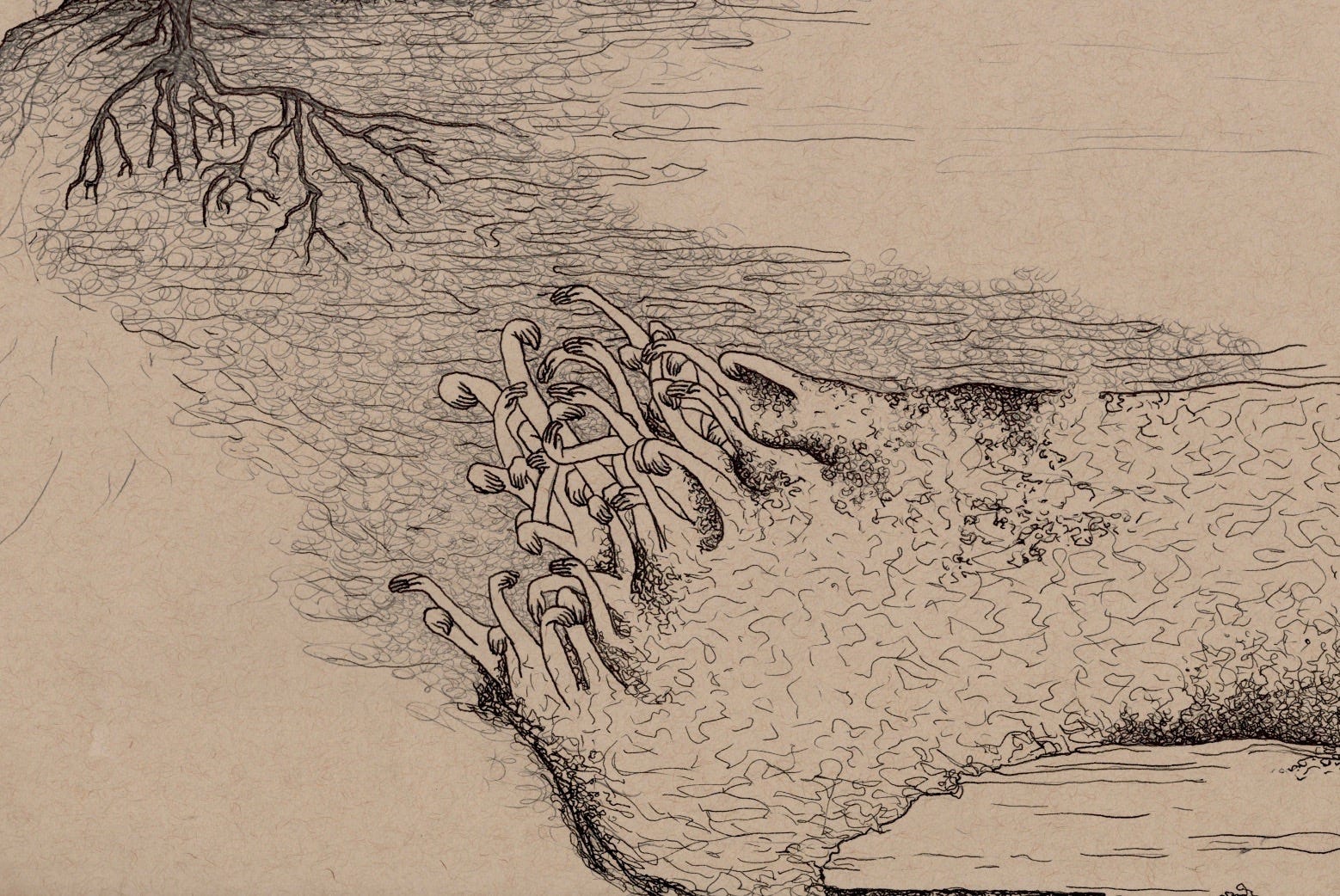 Read more: Read More
Read more: Read More




